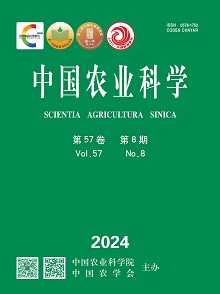【Objective】In the long run, agricultural science & technology and agricultural economics should show a dynamic and mutually beneficial collaborative development trend, which is more conducive to accelerating the development of modern agriculture. To study further the spatial and temporal evolution trends and spatial distribution characteristics of science and technology development of pubic agriculture research institutions, and the coordinated development condition between agricultural science & technology and regional economics, contributes to correctly understand the coordinated development mechanism of agricultural science & technology innovation and regional economy among provinces, and analyze the potential reasons for the poor coordinated development degree of agricultural science & technology and agricultural economy, and explore to find the way to improve the agricultural science & technology innovation level and resolve the problem of “wide gap between agriculture S&T and agriculture economy”. 【Method】Based on numbers of agricultural researchers, the patent grants and numbers of published papers, the GIS technology and ESDA methods are applied for the study of spatial and temporal evolution trends and spatial distribution characteristics of science and technology output by provincial public agriculture research institutions, and coordinated development condition between agricultural science & technology and agricultural economics is revealed. 【Result】 The results show that: During ten years, the science and technology output of provincial public agriculture research institutions are decreasing gradually from the eastern coastal areas to the surroundings; the patent grants are increasing obviously for most provincial agriculture research institutions, while the quantity growth of publication of papers and the agricultural researchers are indistinctive. From the perspective of spatial distribution characteristics, notwithstanding the science and technology output of provincial public agriculture research institutions present the characteristics of local spatial autocorrelation, large-scaled spatial agglomeration effects are not formed. From the perspective of coordinated development condition between agricultural science & technology and agricultural economics, the Eastern cities by Shandong, Jiangsu, Guangdong, Fujian etc. had good performance, the central regions is average and the coordinated development condition between agricultural technology and agricultural economics for the most provinces in Northwest, Southwest and Northeast China are weak. Hereby some policy proposals are put forwarded in aspect of improving the level of science and technology of provincial public agriculture research institutions, and promoting the coordinated development condition between agricultural science & technology and agricultural economics. 【Conclusion】During 2008-2018, the science & technology level of provincial public agriculture research institutions gradually decreased from the eastern coastal areas to the surroundings, showing the features of spatial heterogeneity, and large-scaled spatial agglomeration effects has not been formed. The coordinated development degree between agricultural science & technology level of provincial public agriculture research institutions and provincial agricultural economics is lower, consequently, it is necessary to accelerate the construction of the spatial agglomeration pattern of the coordinated development of agricultural science & technology and agricultural economics, which provides support for solving the problem of “wide gap between agriculture S&T and agriculture economics”.











